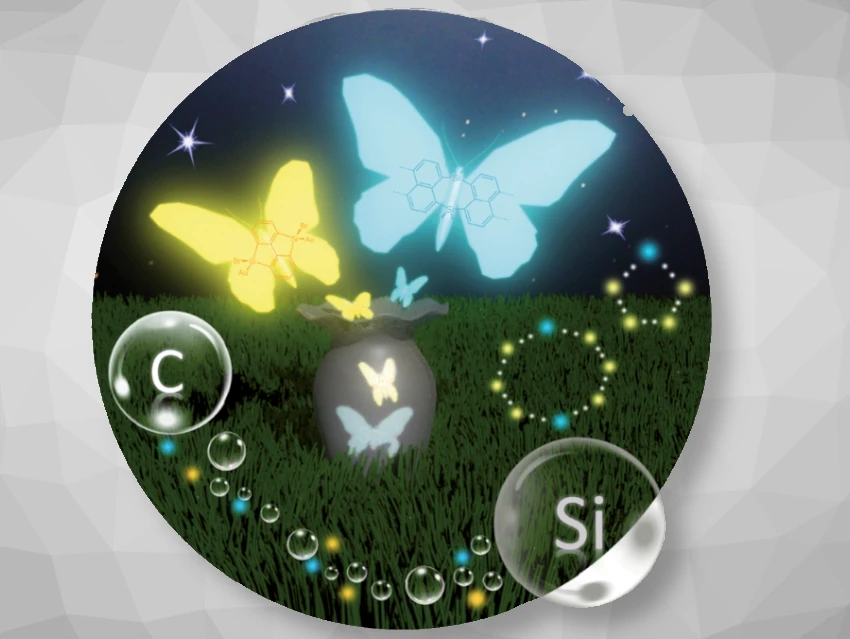In this issue, Zhijun Chen et al. review light-mediated polymerization catalyzed by carbon nanomaterials. Juyoung Yoon et al. summarize research on cell membranes as therapeutic targets, their materials design and biomedical applications. The Minireviews deal with platinum(II)/palladium(II)-based metallosupramolecular architectures as light harvesting systems (Partha Sarathi Mukherjee et al.), carbon–carbon coupling techniques with sulfur in waste-free sustainable synthesis (Valentine P. Ananikov et al.), as well as oligo(phenyleneethynylene)s as shape-tunable building blocks for supramolecular self-assembly (Gustavo Fernández et al.). In a Correspondence, Regine Herbst-Irmer and Dietmar Stalke challenge claims of a new polymorph of phosphorus.
In the original research section, Shigeki Kawai et al. describe the on-surfacce synthesis of silole and disila-cyclooctene derivatives (see picture). Xiaoteng Jia et al. found that bifunctional potential structure design breaks the electrolyte limitations of zinc batteries. Ramon Vilar et al. present a semi-automated high-throughput approach for the synthesis and identification of highly photo-cytotoxic iridium complexes. Linghui Qian et al. succeeded in the targeted degradation of cell surface proteins via chaperone-mediated autophagy with peptide-conjugated antibodies.
- Angewandte Chemie 18/2024: Challenges,
Angew. Chem. Int. Ed. 2024, 63 (18).
Sponsored content is not written by and does not necessarily reflect the views of ChemistryViews’s editorial staff.


